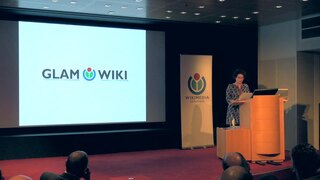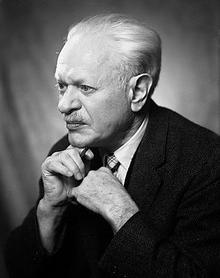
Persuasion or persuasion arts is an umbrella term for influence. Persuasion can influence a person's beliefs, attitudes, intentions, motivations, or behaviours.

Public speaking, also called oratory, is the act or skill of delivering speeches on a subject before a live audience.

Rhetoric is the art of persuasion. It is one of the three ancient arts of discourse (trivium) along with grammar and logic/dialectic. As an academic discipline within the humanities, rhetoric aims to study the techniques that speakers or writers use to inform, persuade, and motivate their audiences. Rhetoric also provides heuristics for understanding, discovering, and developing arguments for particular situations.

Rhetorical criticism analyzes the symbolic artifacts of discourse—the words, phrases, images, gestures, performances, texts, films, etc. that people use to communicate. Rhetorical analysis shows how the artifacts work, how well they work, and how the artifacts, as discourse, inform and instruct, entertain and arouse, and convince and persuade the audience; as such, discourse includes the possibility of morally improving the reader, the viewer, and the listener. Rhetorical criticism studies and analyzes the purpose of the words, sights, and sounds that are the symbolic artifacts used for communications among people.

Kenneth Duva Burke was an American literary theorist, as well as poet, essayist, and novelist, who wrote on 20th-century philosophy, aesthetics, criticism, and rhetorical theory. As a literary theorist, Burke was best known for his analyses based on the nature of knowledge. Further, he was one of the first individuals to stray from more traditional rhetoric and view literature as "symbolic action."
Pathos appeals to the emotions and ideals of the audience and elicits feelings that already reside in them. Pathos is a term used most often in rhetoric, as well as in literature, film and other narrative art.

Genre studies is an academic subject which studies genre theory as a branch of general critical theory in several different fields, including art, literature, linguistics, rhetoric and composition studies.

Inventio, one of the five canons of rhetoric, is the method used for the discovery of arguments in Western rhetoric and comes from the Latin word, meaning "invention" or "discovery". Inventio is the central, indispensable canon of rhetoric, and traditionally means a systematic search for arguments.

Aristotle's Rhetoric is an ancient Greek treatise on the art of persuasion, dating from the 4th century BCE. The English title varies: typically it is Rhetoric, the Art of Rhetoric, On Rhetoric, or a Treatise on Rhetoric.
In Marxist theory, especially that of Louis Althusser, interpellation is a culture's or ideology's creating of identity for "individuals".

In social theory and philosophy, antihumanism or anti-humanism is a theory that is critical of traditional humanism, traditional ideas about humanity and the human condition. Central to antihumanism is the view that philosophical anthropology and its concepts of "human nature", "man" or "humanity" should be rejected as historically relative, ideological or metaphysical.

The term composition as it refers to writing, can describe authors' decisions about, processes for designing, and sometimes the final product of, a composed linguistic work. In original use, it tended to describe practices concerning the development of oratorical performances, and eventually essays, narratives, or genres of imaginative literature, but since the mid-20th century emergence of the field of composition studies, its use has broadened to apply to any composed work: print or digital, alphanumeric or multimodal. As such, the composition of linguistic works goes beyond the exclusivity of written and oral documents to visual and digital arenas.

Rhetoric of science is a body of scholarly literature exploring the notion that the practice of science is a rhetorical activity. It emerged after a number of similarly oriented topics of research and discussion during the late 20th century, including the sociology of scientific knowledge, history of science, and philosophy of science, but it is practiced most typically by rhetoricians in academic departments of English, speech, and communication.
Feminist theory in composition studies examines how gender, language, and cultural studies affect the teaching and practice of writing. It challenges the traditional assumptions and methods of composition studies and proposes alternative approaches that are informed by feminist perspectives. Feminist theory in composition studies covers a range of topics, such as the history and development of women’s writing, the role of gender in rhetorical situations, the representation and identity of writers, and the pedagogical implications of feminist theory for writing instruction. Feminist theory in composition studies also explores how writing can be used as a tool for empowerment, resistance, and social change. Feminist theory in composition studies emerged in the late 1960s and early 1970s as a response to the male-dominated field of composition and rhetoric. It has been influenced by various feminist movements and disciplines, such as second-wave feminism, poststructuralism, psychoanalysis, critical race theory, and queer theory. Feminist theory in composition studies has contributed to the revision of traditional rhetorical concepts, the recognition of diverse voices and genres, the promotion of collaborative and ethical communication, and the integration of personal and political issues in writing.

Modern rhetoric has gone through many changes since the age of ancient Rome and Greece to fit the societal demands of the time. Kenneth Burke, who is largely credited for defining the notion of modern rhetoric, described modern rhetoric as
"rooted in an essential function of language itself, a function that is wholly realistic, and is continually born anew; the use of language as a symbolic means of inducing cooperation in beings that by nature respond to symbols."
Heracles' Bow: Essays on the Rhetoric and Poetics of the Law is a collection of ten essays, written by James Boyd White in 1985, that examine forensic rhetoric as it creates community, as an example of what White calls constitutive rhetoric. White supported the Law and Literature Movement. This movement was in contrast to two other movements of the 1970s and 1980s, Law and economics and Critical Legal Studies (CLS), in holding that a scientific view of law left little room to examine the rhetoric of written and spoken law itself.
"Ideology and Ideological State Apparatuses (Notes Towards an Investigation)" (French: "Idéologie et appareils idéologiques d'État (Notes pour une recherche)") is an essay by the French Marxist philosopher Louis Althusser. First published in 1970, it advances Althusser's conception and critique of ideology. Where Karl Marx and Friedrich Engels posited a thinly-sketched theory of ideology as a system of falsehoods serving the ruling class, Althusser draws upon the works of later theorists such as Antonio Gramsci, Sigmund Freud and Jacques Lacan to proffer a more elaborate redefinition of the theory. Althusser's theory of ideology has remained influential since it was written.
Identification is a key theme in the works of Kenneth Burke as part of the New Rhetoric movement. Contemporary rhetoric focuses on cultural contexts and general structures of rhetoric structures. Burke was a notable contemporary U.S. rhetorician who made major contributions to the rhetoric of identification. James A. Herrick describes one of Burke's foundational ideas with identification is that “rhetoric makes human unity possible, that language use is symbolic action, and that rhetoric is symbolic inducement.” For Burke, words were Terministic screens through which people see the world and interact with each other. Herrick, further explains that identification in rhetoric is crucial to persuasion, and thus to cooperation, consensus, compromise, and action. Burke believed that the most serious human problem was to be alienated or separated, and rhetoric was to be that problem's only solution. Much of his work was based on bringing people back together. However, Burke argues that “Identification is affirmed with earnestness precisely because there is division; Identification is compensatory to division.” Rhetoric's goal, in regards to identification, is to bring people together of whom have been separated by estrangement or opposition. Those who feel isolated or separate from others may identify joint interests with others or become part of an institution -- "‘Belonging’ in this sense is rhetoric."

Invitational rhetoric is a theory of rhetoric developed by Sonja K. Foss and Cindy L. Griffin in 1995.

Feminist rhetoric emphasizes the narratives of all demographics, including women and other marginalized groups, into the consideration or practice of rhetoric. Feminist rhetoric does not focus exclusively on the rhetoric of women or feminists, but instead prioritizes the feminist principles of inclusivity, community, and equality over the classic, patriarchal model of persuasion that ultimately separates people from their own experience. Seen as the act of producing or the study of feminist discourses, feminist rhetoric emphasizes and supports the lived experiences and histories of all human beings in all manner of experiences. It also redefines traditional delivery sites to include non-traditional locations such as demonstrations, letter writing, and digital processes, and alternative practices such as rhetorical listening and productive silence. According to author and rhetorical feminist Cheryl Glenn in her book Rhetorical Feminism and This Thing Called Hope (2018), "rhetorical feminism is a set of tactics that multiplies rhetorical opportunities in terms of who counts as a rhetor, who can inhabit an audience, and what those audiences can do." Rhetorical feminism is a strategy that counters traditional forms of rhetoric, favoring dialogue over monologue and seeking to redefine the way audiences view rhetorical appeals.








